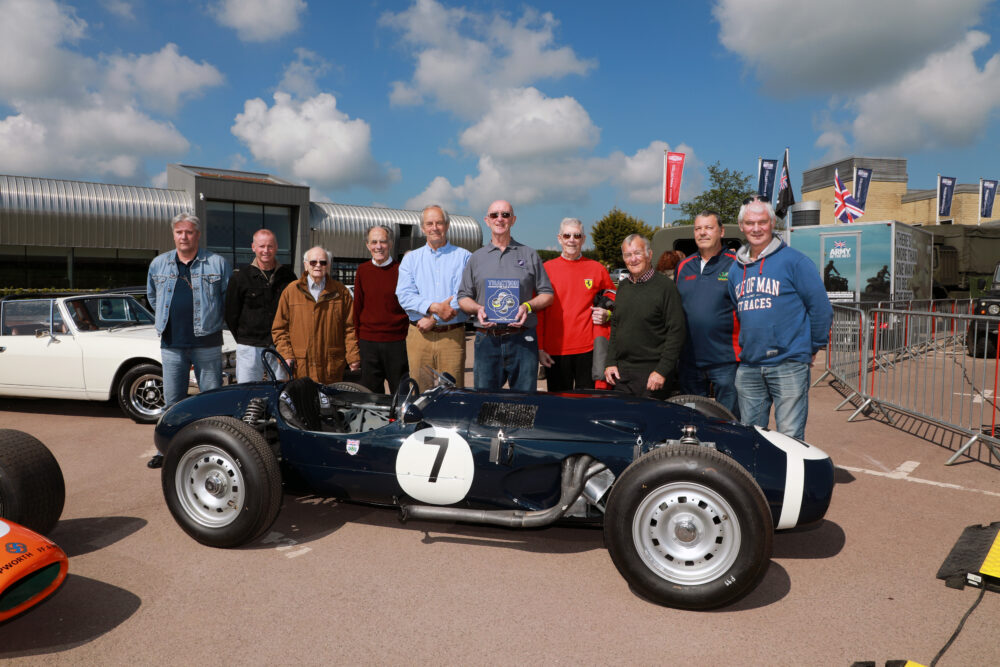The distinguished automotive transmission engineer, all-wheel-drive expert and enthusiastic private pilot, Robin Price, died of covid-19 on 26 December 2020 at University Hospital Coventry following a brave and lengthy battle with cancer.
His wife, Nicky, sadly passed away before him in 2016. They were married 25 June 1968, and she was a crucial part of Robin’s life, not least being the mother of their two children. Robin was 78 years of age. He and Nicky are survived by their daughters Michelle and Jackie and two grandchildren: Michelle’s daughter (18) and son (15).
Robin was born on 30 December 1941 in Coventry. In 1956, after leaving school aged 15, he started a five-year apprenticeship as an aeronautical engineer at Armstrong Whitworth Aircraft at Baginton near Coventry, previously established as the aerial department of the Sir W. G. Armstrong Whitworth & Company engineering group.
In 1971, he joined a new company called FF Developments based in Siskin Drive, Coventry, as a design engineer then project manager. FFD was established by Major Tony Rolt to pursue the development of all-wheel-drive technology in cars and light commercial vehicles.
Rolt with fellow motor racer Freddie Dixon had previously started their own company, Dixon-Rolt Developments in 1938. They had approached Harry Ferguson for financial assistance who bought the company renaming it Harry Ferguson Research (HFR), where Robin worked as a freelance in its final years beginning a longstanding relationship with the Rolt family.
Bill Munro, who co-authored with Pat Turner the story of the Ferguson Formula four-wheel-drive system, interviewed Robin for the definitive book on the subject describing how the technology transformed road cars ‘adding speed, excitement and above all, safety.’
“Four-wheel-drive and ABS are commonplace today, but this wasn’t always so,’ says Munro. “The change began in 1950 when Harry Ferguson bankrolled Dixon and Rolt to design a super-safe family car that would reduce the unacceptably high number of road deaths. Their efforts, frustrating and arduous at times would produce the Ferguson Formula, in its day the most effective and safest system of full-time four-wheel drive and anti-skid braking for the automotive industry.”
“The viscous coupling was invented in the late 1960s, in the dying days of HFR, and the silicone-based shear-thickening fluid that filled the canister was developed during WW2. Tony Rolt sawVC as the key to developing a far better, cheaper, and lighter version of HFR’s mechanical systems, which is why he started FFD. It proved to be absolutely the right call.”
“Crucially, Robin was the key man who made sure that GKN Viscodrive, the company that finally started mass producing the viscous coupling for Ford and others, got it right. That was Robin’s real strength; he was one of those vital people working behind the scenes who know how to make stuff work properly.”
In 1981, Rolt’s son, Stuart, joined FFD as marketing director working closely with Robin to increase sales.
“When my father started FFD, he recruited Robin into our then small drawing office reporting to engineering director Keith Hamilton Smith,” says Rolt, who became chief executive in 1986. “When Keith retired in 1987, Robin stepped into the role with his tremendous all-wheel-drive experience and expertise. But from the outset, he was always a key part of FFD’s success.”
Robin was involved in all FFD projects undertaken from its early days of converting Opel Senators to all-wheel drive patrol vehicles for the British army and transforming Bedford chassis cabs from the Vauxhall Luton plant into 4 x 4 utility vehicles. He was instrumental in developing the prototype Ford Sierra 4 x 4 also Group B and then Group A rally cars. A significant point of pride within FFD was its all-wheel-drive engineering for the prototype AMC Eagle, which became the first mass-produced car with full-time 4WD, beating the Audi Quattro to market by several months.
In 1987, Robin helped to secure a contract with General Motors to transform its Astro and Safari minivan to an all-wheel-drive variant known as the L van, which entered series production at the Baltimore plant in Maryland in the United States. This substantial all-wheel-drive production engineering programme was a first for GM and another significant commercial project for FFD.
“Robin recruited me into FFD to help manage the programme,” says fellow vehicle engineer Gerald Andrews, who subsequently became Ricardo’s director of transmission systems. “Around the same time, Robin led the development of the transmission and driveline for the Jaguar XJ220 prototype, which also had an all-wheel-drive system and was another first in an era of new supercars. Although technically challenging these programmes were great fun and Robin’s passion and unstoppable energy set an excellent example. They were the happiest times in my career; I am thankful to Robin for his part in all of that.”
“Robin travelled the world visiting our customers,” says Rolt further commenting on an era of technological innovation. “In 1990, as the business grew, he helped me open our engineering centre in Detroit. Robin was fiercely loyal to my father, and with his love of flying and background in the aircraft industry he enjoyed the challenge of being asked to produce a small-scale model of the glider which my father had built in the attic in Colditz castle.”
“For many years now, I have been the proud owner of the Ferguson Formula One racing car; the only Ferguson 4WD racing car ever built,” adds Rolt. “Robin was a constant source of advice and unstintingly helped out as we continued to run the car in races and demonstrate its capabilities, and even late last year he was working on getting some new gears made for it.”
The P99 Ferguson Climax was the first successful all-wheel-drive Grand Prix car, and it remains the most famous example because of its twin claim to fame of being also the last front-engine car ever to win a Grand Prix.
In 1994, soon after the sale of FFD to Ricardo, Robin joined the motorsport transmission technology company Xtrac to manage the Opel Calibra racing car gearbox project, which then was Xtrac’s most complex 4-wheel drive transmission system. When that project finished at the end of 1996, Robin set up Xtrac’s non-motorsport activities, which over time developed into the successful High-Performance Automotive (HPA) business unit that today accounts for more than a third of Xtrac’s business.
“Without Robin’s drive and enthusiasm this whole business unit would never have started,” says Adrian Moore chief executive at Xtrac. “Memorable projects that Robin led at Xtrac include the gearbox for the Mercedes CLK-GTR road car in 1997, the gearbox for the Porsche Carrera GT concept launched at the Paris Motorshow in 2000, and the gearbox for the first Tesla Roadster in 2006. As well as leading non-motorsport projects, early in his tenure with us, Robin’s knowledge and understanding of viscous couplings proved extremely useful with the majority of the Formula One grid using this type of differential supplied by Xtrac during the mid-1990s.”
“We can all remember Robin’s never wavering enthusiasm for engineering and for living life to the full,” says Moore, “including memorably a skiing trip only a short time after his second hip replacement. He retired from Xtrac in 2012, but continued working within the industry, and as an unofficial ambassador for Xtrac helping us out from time-to-time with his tremendous knowledge.”
“I was also fortunate to share Robin’s passions for skiing and rugby, as well as engineering and motorsport,” adds Andrews. “In later years this made for entertaining discussions over pub lunches, and though we may not always have agreed, Robin was never anything other than sincere and genuine. Nothing though could hide his pride in Jackie and Michelle and his grandchildren. We remained friends up to his sad passing, and I always marvelled at his seemingly boundless energy and capacity to continue working and enjoying life. We will all sadly miss Robin and our afternoons at the Falcon will not be the same!”
“Due to covid-19 regulations only a few relatives and close friends can attend the funeral,” says his daughter Jackie. “Once we are allowed, we are planning a celebration of Dad’s life where anyone who knew him well will be able to attend. Meanwhile, the air ambulance was a cause he felt strongly about, a crucial organisation that will gratefully receive any donations. We also invite donations to Cancer Research.”



